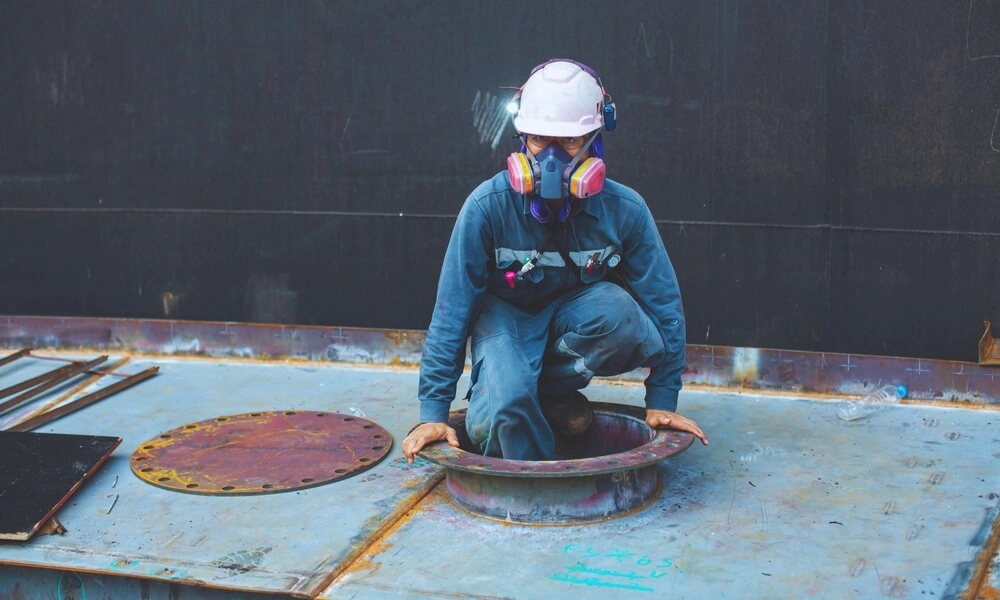Working in confined spaces can be hazardous and requires high caution and preparation. A confined space is any enclosed space with limited access or egress and is not intended for continuous human occupancy. Examples of confined spaces include tanks, silos, tunnels, sewers, and pipelines. Workers entering confined spaces face a range of potential hazards, including the risk of suffocation, exposure to toxic gases, and the risk of fire or explosion.
To ensure the safety of workers entering confined spaces, it is essential to implement a Safe System of Work. A Safe System of Work is a formal and structured approach to ensure that work is carried out safely, with appropriate risk assessments and controls in place. It involves identifying potential hazards and implementing measures to control or eliminate them, reducing the risk of accidents and injuries.
This blog will explore the key elements of a Safe System of Work for a confined space. We will examine the risk assessment process, the importance of isolation and cleaning before entry, the provision of ventilation and personal protective equipment, and the need for emergency procedures and drills. We will also discuss the importance of communication and liaison with rescue personnel and notifying emergency services departments in an emergency. By following these guidelines, you can help ensure the safety of workers entering a confined space and promote a workplace safety culture.
Why Confined Space Safety Is So Important?
Confined spaces are areas not designed for continuous human occupancy and have limited means of entry and exit. Examples of confined spaces include tanks, vessels, silos, sewers, and tunnels. Due to their limited accessibility and lack of ventilation, confined spaces can seriously threaten human health and safety.
Confined space safety is important for several reasons:
- Oxygen Deficiency or Enrichment: Confined spaces may contain less oxygen than the air we breathe, leading to suffocation. Conversely, some confined spaces may contain excess oxygen, leading to fire or explosion.
- Toxic Atmospheres: Confined spaces may contain hazardous gases or chemicals that can harm or kill humans. Exposure to these toxins can cause various health problems, including respiratory problems, organ damage, and even death.
- Entrapment or Suffocation: Confined spaces often have limited means of entry and exit, making it difficult for workers to escape in an emergency. Additionally, workers may become trapped or suffocated by the materials or equipment inside the confined space.
- Fire or Explosion: Confined spaces may contain flammable materials that can ignite and cause a fire or explosion. These incidents can lead to serious injuries or fatalities.
To prevent these hazards, it is essential to have proper confined space safety measures in place. This may include training workers on the proper use of personal protective equipment, implementing proper ventilation and air monitoring systems, and establishing emergency procedures during an incident. These steps allow workers to safely enter and work in confined spaces while minimizing the risk of injury or death.
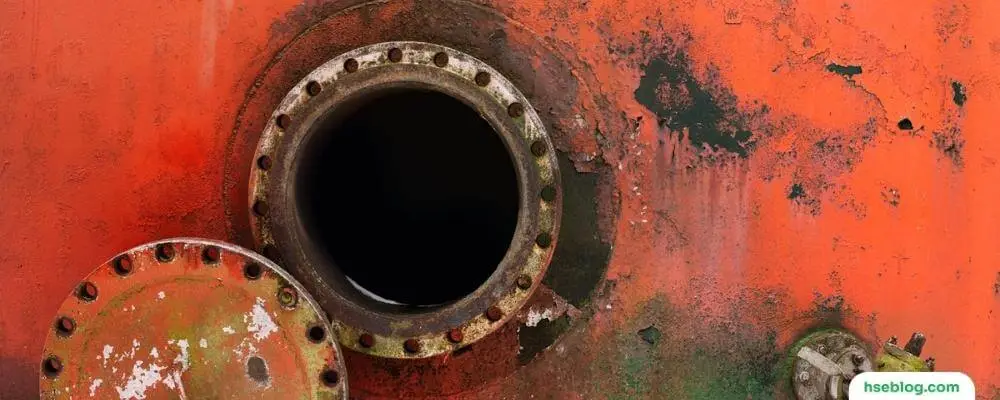
Safe System Of Work For A Confined Space
Working in a confined space can pose significant risks to workers due to limited access and restricted airflow. Following a safe work system is essential to minimize hazards and protect workers.
If entry to a confined space is unavoidable, a safe system for working inside the space should be developed. A “competent person” should be appointed to carry out a risk assessment of the conditions and the work and activities to be conducted in the confined space and identify the necessary safety precautions to be taken according to the findings to avoid posing hazards to workers. The “competent person” should recommend safety precautions regarding the nature of the confined space, the associated risk, and the work involved.
Ensure that the safe system of work, including the precautions identified, is developed and put into practice. Everyone involved must be properly trained and instructed to know what to do and how to do it safely.
The following safety checklist for confined space safety is not intended to be exhaustive but includes many essential elements to help prepare a safe work system.
1. Appoint Suitable Persons For The Work
Appointing suitable persons is critical in ensuring a safe work system for a confined space. The individuals working in the confined space should meet certain requirements to ensure they can carry out the work safely and effectively.
The following requirements should be met by the workers who will be entering and working in the confined space:
- Certified workers: Workers should have received appropriate training to become “certified workers” for confined space work. This training should cover the hazards and risks associated with confined spaces and the safety procedures for entering and working in these environments.
- Sufficient experience: Workers should have sufficient experience in work carried out in a confined space. This experience should include an understanding of the tools, equipment, and procedures that will be used during the work.
- Suitable build: Workers should have a suitable build if the risk assessment highlights exceptional constraints due to the confined space’s physical layout. For example, if the space is very small or requires the worker to crawl, the worker should be physically capable of performing these tasks without difficulty.
- Fit to wear breathing apparatus: If the work requires the use of breathing apparatus, workers should be fit to wear it. This means they should not have any medical conditions that would make it unsafe to wear the apparatus. A medical evaluation may be necessary to determine an individual’s suitability to work in a confined space while wearing breathing apparatus.
By appointing suitable persons for the work, you can help ensure that the individuals working in the confined space are qualified, experienced, and physically capable of carrying out the work safely. This can help to minimize the risks associated with confined space work and protect the health and safety of workers.

2. Isolation
Isolation is an important step in preparing a confined space for work. It involves disconnecting and properly locking off the power supply of all machinery and equipment that could cause hazards in the confined space. It also involves blanking off pipelines and service pipes with contents that could cause hazards and taking effective steps to prevent the ingress or in-rush of hazardous gas, vapor, dust, fume, or free-flowing solid and liquid into the confined space.
Here are some additional details on each of these isolation measures:
- Disconnect and lock off the power supply: Any machinery or equipment that could cause hazards in the confined space should be disconnected from its power supply and properly locked off. This prevents accidental activation of the machinery or equipment, which could pose a risk to workers inside the confined space.
- Blank off pipelines and service pipes: Any pipelines or service pipes that could cause hazards in the confined space should be blanked off. This prevents the release of hazardous materials into the confined space during the work.
- Prevent ingress or in-rush: Effective steps should be taken to prevent the ingress or in-rush of hazardous gas, vapor, dust, fume, or free-flowing solid and liquid into the confined space. This can include measures such as purging, ventilation, and air monitoring to ensure that the air quality inside the confined space remains safe for workers.
Overall, isolation is essential to preparing a confined space for work. By disconnecting and properly locking off machinery and equipment, blanking off pipelines and service pipes, and taking steps to prevent the ingress or in-rush of hazardous materials, you can help ensure a safe working environment inside the confined space.
3. Cleaning And Cooling Before Entry
Before workers enter a confined space, it is important to clean and cool the space to ensure it is safe for them to work in. This process involves adequately purging the space to remove sludge or other deposits that could produce hazardous gas, vapor, dust, or fume during work. If steam cleaning is used, sufficient time should be allowed for cooling to ensure it is safe to work in a confined space.
Here are some additional details on the cleaning and cooling process for confined spaces:
- Adequate purging: The confined space should be adequately purged to remove any sludge or other deposits that could produce hazardous gas, vapor, dust, or fumes during work. This may involve using ventilation equipment, such as blowers or fans, to remove the contaminants from the space.
- Steam cleaning: If steam cleaning is used to clean the confined space, sufficient time should be allowed for cooling before workers enter. This is important because steam cleaning can raise the temperature inside the space, creating a hazardous environment for workers if the space is not allowed to cool down first.
- Air monitoring: Before workers enter the confined space, air monitoring should be conducted to ensure safe air quality. This can include measuring oxygen levels, carbon monoxide, and other gases to ensure they are within safe limits.
Cleaning and cooling are important steps in preparing a confined space for work. By adequately purging the space and allowing sufficient time for cooling after steam cleaning, you can help ensure a safe working environment for workers. Conducting air monitoring before entry can also help identify potential hazards and ensure that the confined space is safe for workers.
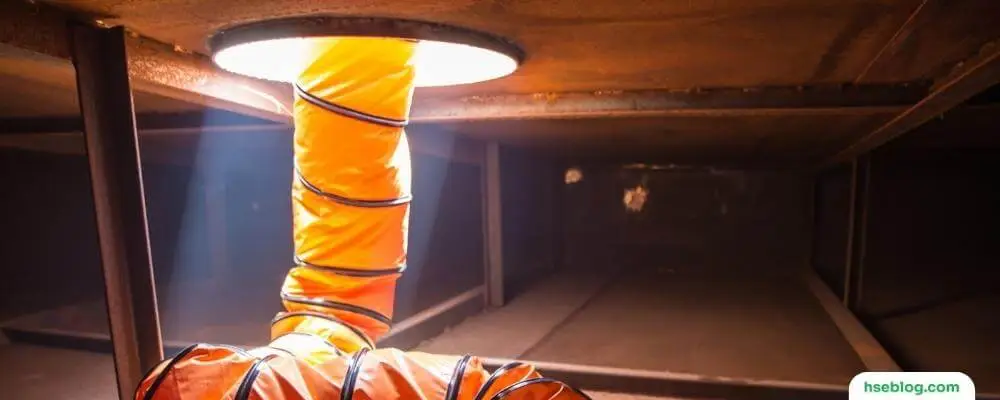
4. Check The Size Of The Entrance
Checking the entrance size is important in preparing a confined space for work. It is essential to ensure that the entrance is big enough to allow workers wearing all the necessary equipment to get in and out easily and provide safe access and egress in an emergency.
If the entrance is too narrow, it can pose a risk to workers because it may make it difficult for them to enter and exit the confined space quickly and safely. In this case, air-line breathing apparatus may be used instead of self-contained breathing apparatus, which is bulkier and can restrict passage.
Here are some additional details on checking the size of the entrance for a confined space:
- Size requirements: The entrance should be large enough to allow workers to enter and exit the confined space easily while wearing all the necessary equipment, including PPE, harnesses, and breathing apparatus.
- Emergency egress: The entrance should also provide safe access and egress. This means that workers should be able to quickly and easily exit the confined space if an emergency situation arises, such as a fire or gas leak.
- Air-line breathing apparatus: If the entrance is too narrow to allow workers to enter and exit while wearing self-contained breathing apparatus, air-line breathing apparatus may be used instead. This equipment allows workers to breathe clean air from an external source rather than carrying their own air supply.
Overall, checking the entrance size is important in preparing a confined space for work. By ensuring that the entrance is large enough to allow for safe entry and egress and providing appropriate breathing apparatus if necessary, you can help ensure the safety of workers working in the confined space.
5. Provision Of Ventilation
The provision of ventilation is an important step in ensuring a safe working environment in a confined space. Adequate ventilation is necessary to ensure an adequate supply of fresh air and to prevent the build-up of hazardous gases, vapors, or fumes that could pose a risk to workers.
Here are some additional details on the provision of ventilation for a confined space:
- Increasing the number of openings: One way to improve ventilation is to increase the number of openings in the confined space. This can be done by opening additional access points or creating additional openings in the walls or roof of the space.
- Mechanical ventilation: In some cases, mechanical ventilation may be necessary to ensure an adequate supply of fresh air. This can involve using fans or other equipment to circulate fresh air into the space and remove stale air and contaminants.
- Avoid using oxygen: It is important to avoid using oxygen to freshen the air inside the confined space, as this can greatly increase the risk of fire or explosion. Instead, fresh air should be circulated into the space using mechanical ventilation or other means.
- Importance of fresh air supply: The provision of an adequate supply of fresh air is particularly important if compressed gas or burning equipment is used inside the confined space. This is because these activities can generate hazardous gases and fumes that can quickly build up in a confined space.
Warning: Exhaust from fuelled engines contains carbon monoxide, which is so dangerous that using such equipment in confined spaces should never be allowed.
Overall, providing ventilation is essential in ensuring a safe working environment in a confined space. By ensuring an adequate supply of fresh air and preventing the build-up of hazardous gases, vapors, or fumes, you can help ensure the health and safety of workers working in confined spaces.

6. Testing The Air
Testing the air inside a confined space is critical in ensuring a safe working environment. It is necessary to check that the air is free from both toxic and flammable gases, that there is no deficiency in oxygen, and that the air is fit to breathe. Testing should be carried out by a competent person using a suitable gas detector that is correctly calibrated.
Here are some additional details on testing the air inside a confined space:
- Purpose of air testing: Air testing is necessary to ensure that the air inside the confined space is safe for workers to breathe. Testing should be carried out before workers enter the confined space and periodically during the work to ensure that conditions inside the space have not changed.
- Competent person: Air testing should be carried out by a competent person with appropriate training and experience conducting air testing. The competent person should also be familiar with the specific hazards and risks associated with the confined space.
- Suitable gas detector: A suitable gas detector should test the air inside the confined space. The gas detector should be capable of detecting both toxic and flammable gases and should be correctly calibrated before use.
- Continuous air monitoring: Where the risk assessment indicates that conditions may change during work or as a further precaution, continuous air monitoring, as advised by the competent person, is required. This involves using a gas detector capable of continuously monitoring the air inside the confined space and providing an alarm if hazardous conditions are detected.
Testing the air inside a confined space ensures a safe working environment. By checking for toxic and flammable gases, deficiency in oxygen, and ensuring that the air is fit to breathe, you can help ensure the health and safety of workers working in confined spaces.
7. Provision Of Special Tools And Lighting
Providing special tools and lighting is critical in ensuring a safe working environment in a confined space, especially where flammable or potentially explosive atmospheres are likely. It involves providing non-sparking tools and specially protected lighting to minimize the risk of fire or explosion.
Here are some additional details on the provision of special tools and lighting in a confined space:
- Non-sparking tools: Non-sparking tools should be used in confined spaces where flammable or potentially explosive atmospheres are likely. These tools are designed to minimize the risk of sparks, which could ignite any flammable gases or vapors in the confined space.
- Specially protected lighting: Specially protected lighting should be used in confined spaces where flammable or potentially explosive atmospheres are likely. This can include using explosion-proof or intrinsically safe lighting fixtures to prevent flammable gases or vapors ignition.
- Precautions to prevent electric shock: In certain confined spaces, such as inside metal tanks, suitable precautions should be taken to prevent electric shock. This may involve using extra low-voltage equipment, such as equipment that operates at a voltage not exceeding 50 volts alternating or 120 volts direct current. Additionally, residual current devices may be necessary to prevent electric shock in certain situations.
Overall, providing special tools and lighting is essential in ensuring a safe working environment in a confined space. By using non-sparking tools, specially protected lighting, and taking suitable precautions to prevent electric shock, you can help ensure the safety of workers working in a confined space.
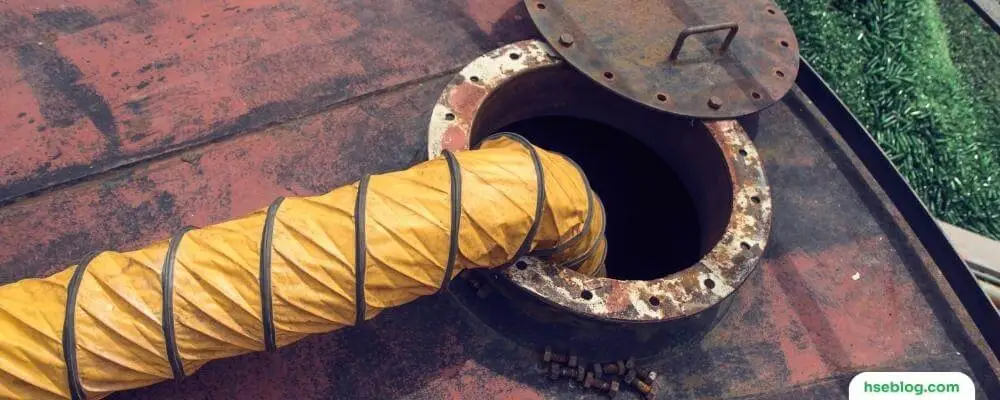
8. Provision Of Personal Protective Equipment
The provision of personal protective equipment (PPE) is an essential step in ensuring the safety of workers who will be entering a confined space. When a risk assessment report recommends the use of an approved breathing apparatus or entry into a confined space for underground pipework is required, it is necessary to ensure that any person entering or remaining in the confined space is properly wearing an approved breathing apparatus and a suitable safety harness connected to a lifeline.
Here are some additional details on the provision of personal protective equipment in a confined space:
- Approved breathing apparatus: When an approved breathing apparatus is recommended in a risk assessment report, it is necessary to ensure that any person entering or remaining in the confined space is properly wearing an approved breathing apparatus appropriate for the specific hazards and risks associated with the space.
- Safety harness: Workers entering a confined space should wear a safety harness connected to a lifeline. The lifeline should be strong enough to pull the worker out of the space in an emergency. The free end of the lifeline should be held by a person who remains outside the confined space and has sufficient physical strength to pull the worker out of the space in an emergency.
- Physical strength: The person holding the free end of the lifeline must remain in place throughout work and have the sufficient physical strength to pull the worker out of the space in an emergency. This is essential to ensure workers can be quickly and safely rescued in an emergency.
Overall, providing personal protective equipment is essential in ensuring workers’ safety entering a confined space. By providing approved breathing apparatus, a suitable safety harness connected to a lifeline, and ensuring that a person with sufficient physical strength remains outside the space to hold the lifeline, you can help ensure the health and safety of workers working in the confined space.
9. Issuance Of Safety Certificate
Issuing a safety certificate is a critical step in ensuring the safety of workers entering a confined space. The certificate confirms that all necessary safety precautions have been taken, and a formal check has been undertaken before workers are allowed to enter or work in the confined space. The certificate specifies when workers may remain safely in the confined space and serves as a means of communication between site management, supervisors, and workers carrying out the hazardous work.
Here are some additional details on the issuance of a safety certificate in a confined space:
- Essential features of a safety certificate: The safety certificate should contain essential features such as the location of the confined space, the names of workers who will be entering the confined space, the names of persons who may authorize particular jobs, and any limits to their authority, risk control measures, the name of the person responsible for specifying the necessary precautions (such as isolation, air testing, emergency arrangements), the name of the person staying outside the confined space, and the period during which workers may remain safely in the confined space.
- Confirmation of safety precautions: The safety certificate confirms that all necessary safety precautions have been taken. A formal check has been undertaken before workers enter or work in a confined space.
- Period of safety: The safety certificate specifies the period during which workers may remain safely in the confined space. This is important because workers should not stay confined beyond this period, as conditions may change over time.
- Communication tool: The safety certificate communicates between site management, supervisors, and workers carrying out hazardous work. This helps ensure that everyone involved in the work is aware of the specific hazards and risks associated with the confined space and the precautions taken to ensure their safety.
Overall, issuing a safety certificate is an essential step in ensuring the safety of workers entering a confined space. By confirming that all necessary safety precautions have been taken and providing clear communication between site management, supervisors, and workers, you can help ensure the health and safety of workers working in the confined space.
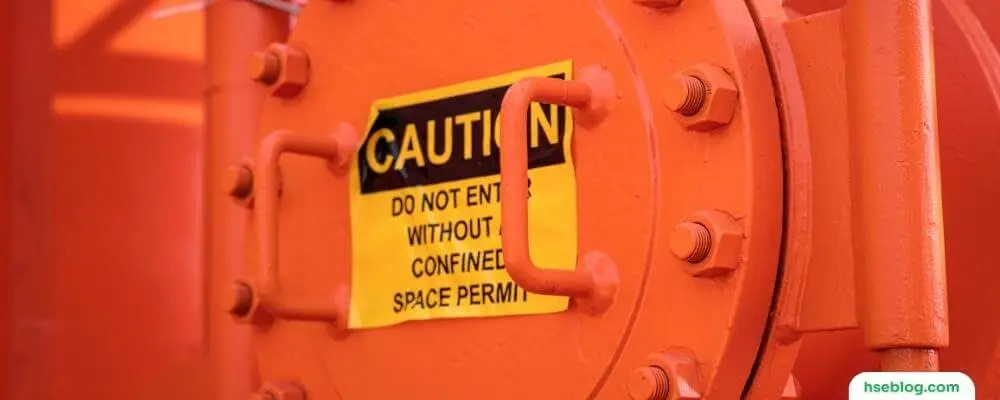
10. Emergency Plan
Having an emergency plan is a critical step in ensuring the safety of workers who will be entering a confined space. The emergency plan outlines the procedures and measures that should be taken in case of any serious and imminent danger to workers inside the confined space. The emergency plan should be formulated and implemented according to the nature of the confined space, the risks involved, and the nature of an emergency rescue.
Here are some additional details on the emergency plan for a confined space:
- Procedures and measures: The emergency plan should outline the procedures and measures that should be taken in case of an emergency situation. This includes rescue procedures, first aid procedures, and evacuation procedures.
- Nature of the confined space: The emergency plan should be formulated according to the nature of the confined space, including the specific hazards and risks associated with the space.
- Equipment and supplies: It is essential to provide and keep readily available in a satisfactory condition a sufficient supply of equipment and supplies, including approved breathing apparatus, suitable reviving apparatus, vessels containing oxygen or air, safety harness, and ropes, and an audio and visual alarm for alerting others outside the confined space.
- Training: Workers should receive appropriate training on the emergency plan and the procedures and measures that should be taken in case of an emergency situation.
Overall, having an emergency plan is an essential step in ensuring the safety of workers who will be entering a confined space. By outlining the procedures and measures to be taken in an emergency situation, providing the necessary equipment and supplies, and ensuring that workers receive appropriate training, you can help ensure the health and safety of workers working in a confined space.
11. Communications
Effective communication is critical in ensuring the safety of workers who will be entering a confined space, especially in the event of an emergency. Workers inside the confined space should be able to communicate with people outside so rescue procedures can start in an emergency.
Here are some ways to ensure effective communication in a confined space:
- Emergency call systems: An emergency call system should be installed in the confined space to allow workers inside to call for help in an emergency. This could include a telephone, radio, or intercom system connected to a central control room or emergency response team.
- Alarm systems: Alarm systems should be installed in the confined space and surrounding areas to alert people outside in an emergency. The alarm system should include audio and visual alarms that are clearly visible and audible, even in noisy or poorly lit environments.
- Backup systems: Backup systems should be in place to ensure that communication is possible even during night shifts, weekends, and public holidays. This may involve installing a backup power supply or using a system not dependent on electricity, such as a manual alarm or whistle.
- Communication protocols: Clear communication protocols should be established to ensure workers inside the confined space know how to use the emergency call and alarm systems effectively. This may involve providing training on how to use the systems and what information to provide when calling for help.
Overall, effective communication is essential in ensuring the safety of workers entering a confined space. By installing emergency call and alarm systems, providing backup systems, and establishing clear communication protocols, you can help ensure that workers inside the confined space can communicate effectively with people outside in case of an emergency.
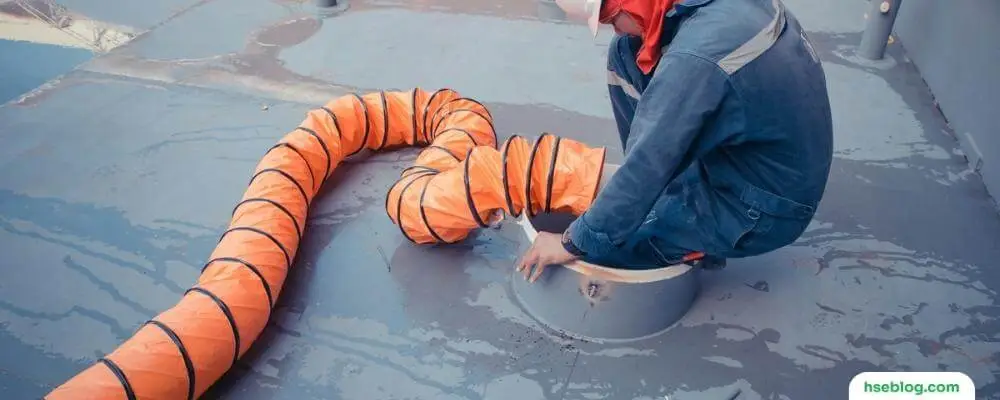
12. Liaison And Rescue
Liaison and rescue are critical steps in ensuring the safety of workers entering a confined space. Liaison involves assigning a person to a station outside the confined space to maintain communication with the worker inside. Rescue involves making sufficient rescue personnel available outside the confined space who are trained in rescues, physically fit and readily available to carry out rescue tasks, and capable of using any rescue equipment provided.
Here are some additional details on the liaison and rescue procedures for a confined space:
- Liaison: A person should be assigned to a station outside the confined space to communicate with the worker inside. This person should be trained in the communication system and be aware of the procedures for calling for help in an emergency.
- Rescue personnel: A sufficient number of rescue personnel should be available outside the confined space. This personnel should be properly trained in rescues, physically fit and readily available to carry out rescue tasks, and capable of using any rescue equipment provided, such as breathing apparatus, reviving apparatus, lifelines, and firefighting equipment.
- Training: Rescue personnel should receive appropriate training on rescue procedures, including the use of rescue equipment, first aid procedures, and evacuation procedures. They should also be trained to work effectively as a team for rescue operations.
- Protective equipment: Rescue personnel should be provided with adequate protective equipment to protect against harm. This may include protective clothing, helmets, gloves, and safety glasses.
Overall, liaison and rescue are essential in ensuring the safety of workers entering a confined space. By assigning a person to maintain communication with the worker inside and making a sufficient number of trained rescue personnel available outside the confined space, you can help ensure workers’ health and safety.
13. Shut Down
In some situations, shutting down the adjacent plant may be necessary before attempting an emergency rescue in a confined space. This is because the adjacent plant may be the source of the hazard, such as a leaking pipe or a machine that could start up unexpectedly and cause harm to the rescue team or the worker inside the confined space.
Here are some reasons why it may be necessary to shut down the adjacent plants before attempting emergency rescue:
- Safety of rescue personnel: Shutting down the adjacent plants can help ensure the safety of the rescue team, who will not have to worry about additional hazards or risks associated with the adjacent plant.
- Containment of hazards: Shutting down adjacent plants can help contain the hazard by stopping the flow of materials or energy that could be causing harm inside the confined space.
- Prevention of re-ignition: Shutting down adjacent plants can help prevent the re-ignition of flammable or explosive gases or substances that could cause an explosion or fire in the confined space.
Overall, shutting down the adjacent plants before attempting emergency rescue is an important safety measure that can help ensure the safety of both the rescue team and the workers inside the confined space. However, it is important to weigh the risks and benefits of shutting down the adjacent plant and to make an informed decision based on the specific circumstances and risks involved.
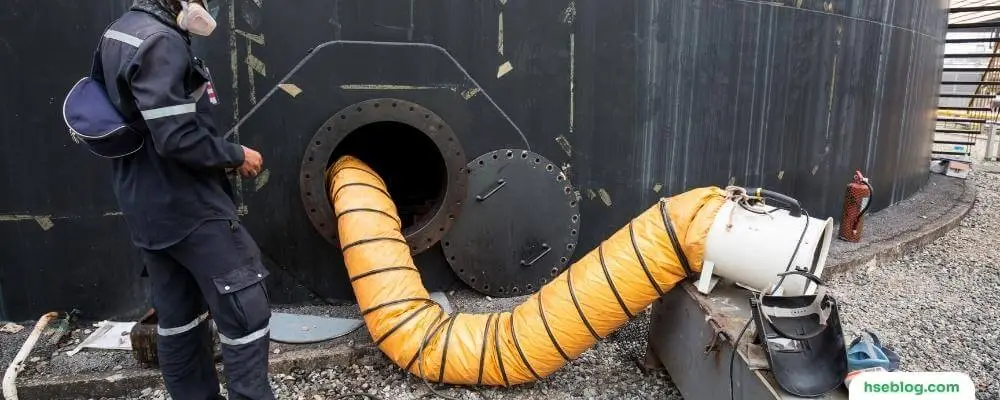
14. First-aid Procedures
First-aid procedures are critical in ensuring the safety of workers entering a confined space. It is important to have qualified first-aiders available to properly use any necessary first-aid equipment provided.
Here are some additional details on first-aid procedures for a confined space:
- Qualified first-aiders: It is important to have qualified first-aiders available on site who are trained and certified in providing first-aid. They should be familiar with the specific hazards and risks associated with the confined space and be able to respond quickly and effectively in case of an emergency.
- First-aid equipment: First-aid equipment should be provided on-site, including a first-aid kit, oxygen therapy equipment, and other necessary equipment. The equipment should be properly maintained and regularly checked to ensure it is in good working condition.
- Training: Workers entering the confined space should receive appropriate training on first-aid procedures, including how to use the first-aid equipment and respond in an emergency.
- Communication: Communication protocols should be established to ensure that first-aiders are notified promptly in case of an emergency and that they can respond quickly.
Overall, first-aid procedures are an essential step in ensuring the safety of workers who will be entering a confined space. By having qualified first-aiders available, providing necessary first-aid equipment, and ensuring that workers receive appropriate training, you can help ensure the health and safety of workers working in confined spaces.
15. Drills
Drills for rescue procedures should be conducted periodically to ensure that rescue personnel understand and are familiar with the necessary rescue procedures. These drills help identify any potential weaknesses in the rescue plan and provide an opportunity for the rescue team to gain practical experience in responding to an emergency.
Here are some reasons why drills for rescue should be conducted periodically:
- Identification of weaknesses: Drills can help to identify any weaknesses in the rescue plan and provide an opportunity to address these weaknesses before an emergency situation occurs.
- Familiarity with procedures: Drills help rescue personnel understand and know the necessary procedures. This can help to improve response times and reduce the risk of errors during a real emergency.
- Improved communication: Drills provide an opportunity to test communication systems and protocols, helping to ensure that communication is effective and reliable during an emergency.
- Confidence building: Regular drills can help build rescue personnel’s confidence, making them better prepared and more effective in responding to an emergency.
Overall, conducting periodic drills for rescue procedures is important in ensuring workers’ safety entering a confined space. By identifying weaknesses, improving familiarity with procedures, testing communication systems, and building confidence, you can help ensure that rescue personnel are prepared to respond effectively to any emergency situation.

16. Emergency Services
Procedures to notify emergency services departments, such as the Fire Services Department, should be formulated in advance for a confined space. Preparing to provide emergency services departments with relevant information on their arrival is important to help them understand the dangers in the confined space.
Here are some additional details on emergency services procedures for a confined space:
- Notification procedures: Clear procedures should be established for notifying emergency services departments in an emergency. This may involve calling a specific number or contacting a designated person responsible for the call.
- Relevant information: Information about the confined space, including the location, the hazards present, and the number of workers inside, should be provided to the emergency services department as quickly as possible. This information can help emergency services personnel to better understand the situation and respond more effectively.
- Preparation: In addition to providing relevant information, it is important to prepare the confined space for the arrival of emergency services personnel. This may involve ensuring that the entrance is clear, providing access to the confined space, and ensuring that necessary rescue equipment is readily available.
- Communication: Clear communication protocols should be established to ensure that emergency services personnel can communicate effectively with workers inside the confined space and with each other.
Overall, emergency services procedures are an essential step in ensuring the safety of workers who will be entering a confined space. By establishing notification procedures, providing relevant information, preparing the confined space for the arrival of emergency services personnel, and establishing clear communication protocols, you can help ensure that emergency services personnel can respond effectively to any emergency situation.
Conclusion
Working in a confined space can be dangerous, and it is essential to have a Safe System of Work in place to protect workers and minimize risks. Implementing a Safe System of Work involves identifying potential hazards, implementing appropriate control measures, providing workers with training and personal protective equipment, and conducting regular drills to prepare for emergencies.
It is also important to establish clear communication protocols, notify emergency services departments in case of an emergency, and liaise with rescue personnel to ensure a prompt and effective response in an emergency.
By following these guidelines and implementing a comprehensive, Safe System of Work, you can help ensure the safety of workers entering confined spaces and create a safer work environment. Remember, safety should always be the top priority, and taking the necessary precautions can prevent accidents, save lives, and reduce the risk of injuries in the workplace.

